- Home
- D. H. Lawrence
Selected Stories
Selected Stories Read online
D. H. Lawrence
* * *
SELECTED STORIES
Edited with Notes by SUE WILSON
With an Introduction by LOUISE WELSH
Contents
A Note on the Texts
Introduction
SELECTED STORIES
Love Among the Haystacks
The Minar at Home
The White Stocking
Odour of Chrysanthemums
New Eve and Old Adam
Vin Ordinaire
The Prussian Officer [Honour and Arms]
England, My England
The Horse-Dealer’s Daughter
The Blind Man
Adolf
The Last Straw [Fanny and Annie]
Sun
The Rocking-Horse Winner
The Man Who Loved Islands
Things
Chronology
Further Reading
Glossary
Explanatory Notes
Notes
Acknowledgements
Follow Penguin
PENGUIN CLASSICS
SERIES ADVISOR: PAUL POPLAWSKI
SELECTED STORIES
DAVID HERBERT LAWRENCE was born into a miner’s family in Eastwood, Nottinghamshire, in 1885, the fourth of five children. His first novel, The White Peacock, was published in 1911. In 1912 Lawrence went to Germany and Italy with Frieda Weekley, the German wife of a professor at Nottingham University College, where Lawrence had studied; she divorced, and they were married on their return to England in 1914. Lawrence had published Sons and Lovers in 1913; but The Rainbow, completed in 1915, was suppressed, and for three years he could not find a publisher for Women in Love, which he first completed in 1917. After the First World War he travelled extensively in Europe, Australia, America and Mexico. He returned to Europe from America in 1925, and lived mainly in Italy and France. His last novel, Lady Chatterley’s Lover, was published in 1928 but was banned in England and America. In 1930 he died in Vence, in the south of France, at the age of forty-four.
SUE WILSON taught on the postgraduate programme on D. H. Lawrence for several years at the University of Nottingham, where she was a Lecturer in Modern English Literature. She is currently a Senior Lecturer in Drama at Anglia Ruskin University in Cambridge.
LOUISE WELSH made her living for many years as a dealer in out-of-print and second-hand books. Her first novel, The Cutting Room (Canongate Books) is being translated into nineteen languages. The Guardian chose Louise as one of Britain’s Best First Novelists of 2002 and ‘a woman to watch’ in 2003. She is a regular radio broadcaster, has published many short stories and contributed articles and reviews to most British broadsheets. Her second book, Tamburlaine Must Die, was published in August 2004. Louise lives in Glasgow.
PAUL POPLAWSKI is a Senior Lecturer at the University of Leicester. He is a member of the editorial board of the Cambridge Edition of Lawrence’s Works and his recent publications include the revised third edition of A Bibliography of D. H. Lawrence (Cambridge, 2001), and Encyclopedia of Literary Modernism (Greenwood Press, 2003).
A Note on the Texts
The texts in this volume (except ‘Vin Ordinaire’) are those established for the Cambridge University Press editions listed below. Each edition contains an apparatus of all the changes made to the base-texts, a full discussion of the editorial decisions taken, and a detailed account of the history of textual transmission, including locations for all surviving manuscript and typescript sources.
England, My England and Other Stories, ed. Bruce Steele (Cambridge University Press, 1990): ‘England, My England’ (1915 version, printed as an appendix), ‘The Horse-Dealer’s Daughter’, ‘The Blind Man’, ‘Adolf’, ‘The Last Straw’.
Love Among the Haystacks and Other Stories, ed. John Worthen (Cambridge University Press, 1987): ‘Love Among the Haystacks’, ‘The Miner at Home’, ‘New Eve and Old Adam’.
The Prussian Officer and Other Stories, ed. John Worthen (Cambridge University Press, 1983): ‘The White Stocking’, ‘Odour of Chrysanthemums’, ‘The Prussian Officer’.
The Virgin and the Gipsy and Other Stories, ed. Michael Herbert, Bethan Jones and Lindeth Vasey (Cambridge University Press, 2006): ‘Things’.
The Woman Who Rode Away and Other Stories, ed. Dieter Mehl and Christa Jansohn (Cambridge University Press, 1995): ‘Sun’, ‘The Rocking-Horse Winner’, ‘The Man Who Loved Islands’.
*
‘Love Among the Haystacks’: the manuscript (in private hands) written by November 1911, and revised in 1913, is the base-text, slightly emended. A typescript prepared posthumously in 1930 became the source of the text published in the Nonesuch Press edition of Love Among the Haystacks & Other Pieces (November 1930).
‘The Miner at Home’: written by 14 February 1912; accepted by the Nation, which sent proofs on 14 March and published it on 16 March 1912. The story was collected in Phoenix: The Posthumous Papers of D. H. Lawrence, ed. Edward D. McDonald (New York: Viking, 1936). The base-text and only-surviving original source is the first printing in the Nation. The Cambridge text has been revised at 47:2: gets’ appen emended to gets ’appen.
‘The White Stocking’: first written in the autumn of 1907; re-written in 1910 and revised in 1911 and 1913 (when it was typed), and published by the American magazine the Smart Set (October 1914). Lawrence re-wrote the story again in July 1914, and revised it heavily in proof for Duckworth’s The Prussian Officer and Other Stories (November 1914). The base-text is the final version printed in Duckworth’s volume. The Cambridge text has been revised at 64:29: “Yes,” emended to “Yes.”
‘Odour of Chrysanthemums’: first written late 1909, and revised in 1910 and 1911 on proof sheets from the English Review, which published it in June 1911. Lawrence revised the story again in the summer of 1914, re-writing the ending completely, and also revised it heavily in proof for The Prussian Officer and Other Stories. The base-text is the final version printed in Duckworth’s volume, emended from the 1910–11 proofs.
‘New Eve and Old Adam’: written between mid-May and 10 June 1913, and perhaps revised in July 1914 when Lawrence was revising stories for Duckworth, but first published in the selection of short fiction A Modern Lover published by Martin Secker (October 1934). The manuscript (University of Tulsa) is the base-text, slightly emended. The Cambridge text has been revised at:
97:28: stretched emended to sketched
107:10: house emended to home
107:14: semi-erotic emended to semi-erotic,
112:19: audience;— emended to audience;
112:30: braided emended to banded
119:36: touch-touch of emended to touch—touch—of
120:9: her, emended to her;
‘Vin Ordinaire’: written between May and June 1913; typed in July 1913 and perhaps revised in October; the base-text is the English Review publication (June 1914), and the story will be published in The Vicar’s Garden and Other Stories, ed. N. H. Reeve (Cambridge University Press, forthcoming). It was re-written as ‘The Thorn in the Flesh’ in July 1914 and appeared in that form in The Prussian Officer and Other Stories. The English Review text has been revised at 133:36: as/as emended to as.
‘The Prussian Officer’ [‘Honour and Arms’]: written between May and June 1913; it was typed in July 1913, perhaps revised in October 1913, and printed in a shortened form, with Lawrence’s title ‘Honour and Arms’, in the English Review (August 1914). The full text was published, with its title changed to ‘The Prussian Officer’ (without Lawrence’s consent), in The Prussian Officer and Other Stories. The base-text is the final version printed in Duckworth’s volume, emended from the manuscript (University of Texas at Austin).
‘England, My England’: first written
in June 1915 and typed that summer; Lawrence revised the typescript and then proofs for the English Review. It may have been further revised but was also cut for publication in that magazine in October 1915. The base-text is a set of uncorrected English Review proofs (Nottinghamshire Archives) which, while lacking Lawrence’s proof changes, include phrases and passages cut from the English Review. The story was re-written and extended in October 1921 and was published in Thomas Seltzer’s England My England and Other Stories (October 1922; probably for typographical reasons, the title of Seltzer’s volume omitted the comma before ‘My’ that exists in the story’s title).
‘The Horse-Dealer’s Daughter’: first written probably in January 1916 and revised in November and again in October 1921; it was published in the English Review (April 1922) and then included in England My England and Other Stories. The base-text here is the magazine printing.
‘The Blind Man’: first written November 1918, later heavily revised, and published in the English Review in July 1920. Lawrence revised the text again very slightly in October 1921 for England My England and Other Stories. The base-text is the magazine printing, emended from Seltzer’s volume. The Cambridge text has been revised at 202:33: note from emended to note came from.
‘Adolf’: written March 1919 and later corrected by Lawrence in typescript. It was published in the Dial (September 1920) and collected posthumously in Phoenix (1936). The base-text is the corrected typescript (University of Texas at Austin), slightly emended. The Cambridge text has been revised at 220:16: He like emended to He liked.
‘The Last Straw’ [‘Fanny and Annie’]: written in May 1919, typed (and probably revised) in July 1920. Lawrence corrected proofs for Hutchinson’s Story Magazine (November 1921) and the story was reprinted in England My England and Other Stories. The base-text is the magazine version, emended from Seltzer’s volume. Lawrence asked for the title to be changed to ‘The Last Straw’ in a letter to his English publisher Martin Secker of 29 December 1921.
‘Sun’: first written and typed in December 1925: this version was published by the New Coterie (Autumn 1926), and was also included in Secker’s The Woman Who Rode Away and Other Stories (May 1928). In 1928, Lawrence wrote the story out afresh for the American collector Harry Crosby, altering it considerably while doing so. This version was published privately by the Black Sun Press in Paris (October 1928). The base-text is the 1928 manuscript (University of Texas at Austin). As this version of the story was originally published separately, its title is usually italicised, as in the Cambridge edition; however, for this edition the title is presented in roman type to conform to the style of the other stories.
‘The Rocking-Horse Winner’: written February 1926 and published in Harper’s Bazaar (July 1926) and in Secker’s The Woman Who Rode Away and Other Stories. The base-text is the manuscript (University of Nottingham), emended from the magazine version.
‘The Man Who Loved Islands’: first written June–July 1926 and then typed and extensively revised by Lawrence. The revised typescript was used for the text in the Dial magazine (July 1927), for which Lawrence corrected proofs, and it was also collected in Alfred Knopf’s The Woman Who Rode Away and Other Stories (May 1928). It was not included in Secker’s volume of that name because of the threat of legal action by the novelist Compton Mackenzie; it was first collected in Britain in Secker’s The Lovely Lady (January 1933). The base-text is the revised typescript, emended from the Dial proofs (both at Yale University). The Cambridge text has been revised at 311:5: power the emended to power of the.
‘Things’: written late May 1927; the story was published in the Bookman (August 1928) and collected in Secker’s The Lovely Lady. The base-text is the manuscript (University of Texas at Austin), emended from an uncorrected typescript (University of California at Berkeley) where the manuscript has been damaged. The Cambridge text has been revised at 313:9: Ah!—freedom! To be free to one’s emended to Ah!—freedom! To be free to live one’s.
Paul Poplawski
This selection of the stories of D. H. Lawrence draws on work written at all stages of his career and from all his published collections. Some of the most famous stories are included (for example, ‘Love Among the Haystacks’, ‘Odour of Chrysanthemums’ and ‘The Rocking-Horse Winner’) but this volume also brings together for the first time in this form three stories he wrote consecutively in May and June 1913 at the very height of his early career (‘The Prussian Officer’, ‘Vin Ordinaire’ and ‘New Eve and Old Adam’). It also chooses unusual and compelling early versions of two stories, ‘Vin Ordinaire’ to complete the sequence above (a much bleaker and spare treatment of the scenario that became ‘The Thorn in the Flesh’ by July 1914) and the ‘England, My England’ of 1915, where personal negation and national self-destruction are drawn together with more urgency than in the longer version of 1921–2. Conversely, the exuberant and frank ‘Sun’ is included in its later and heavily revised form of 1928 to demonstrate Lawrence’s remarkable ability to revisit and re-imagine his own writing.
Together this selection offers a range of work in settings as different as English hayfields in summer, miners’ cottages, Bavarian landscapes, bohemian Paris, Sicilian villas and Italian palazzos; New York and New England exist to be left – and perhaps returned to, defeated. There is much more to be found than mere surface verisimilitude in these stories, but the diversity of place and time was one main principle of selection for the volume. It aims to offer a rich, varied and compact version of Lawrence’s whole career as an imaginative writer.
Sue Wilson
Introduction
Somewhere, tucked away in the forgotten recesses of a dusty storeroom in some gallery of modern art, there may be a lost Warhol screen print of D. H. Lawrence, his beard shifting from pink to blue to acid yellow. By 1960 Lawrence had been dead for thirty years, but his work seems as much a part of the era of newly won sexual freedom and class-consciousness as the pill. Philip Larkin (who claimed he always mowed his grass wearing a T-shirt depicting D. H. Lawrence) places him at the centre of the sexual revolution, juxtaposing Lady Chatterley’s Lover with the trendiest pop group of the day:
Sexual intercourse began
In nineteen sixty-three
(Which was rather late for me) –
Between the end of the Chatterley ban
And the Beatles’ first LP.1
Lawrence explored an impressive breadth of forms and concerns in his short literary life. When he died at the age of forty-four he left behind eleven published novels, numerous anthologies of novellas, short stories and poetry, impressive collections of literary criticism and non-fiction, several plays and a massive body of correspondence.
This collection of stories encapsulates much of the breadth of concern that populates Lawrence’s writing, but they are more than a mere introduction to greater works. In the words of literary critic Diana Trilling, if Lawrence ‘had written nothing except his long and short stories, not even his novels, he would still have made a major contribution to modern fiction’.2
So why should our imaginary screen print be lost? Why doesn’t it appear proudly alongside those of other iconic figures, Marilyn Monroe, David Bowie and Jackie Kennedy? Why indeed is Lawrence’s work slipping from the school and university curriculum, falling from all but second-hand bookshop shelves, no longer the subject of ‘major motion pictures’ and television adaptations?
D. H. Lawrence’s critics have always been at least as eminent and as passionate as his supporters. Asked to contribute to Berkeley’s D. H. Lawrence fellowship fund Vladimir Nabokov paid up but announced, ‘I dislike D. H. Lawrence as a writer and detest Taos.’3
Some of Lawrence’s later vilification came from a feminist movement that was re-examining texts and discovering patriarchal attitudes embedded in them. Kate Millett brands Lawrence an ‘overt racist’ who would nevertheless use ‘the lower-caste male … to master or humiliate the white man’s own insubordinate mate’.4 In other words she considers that Lawrence
would overcome his disgust at people of colour if he could use them to control or debase an errant woman.
The poet Tony Hoagland is so fed up with Lawrence’s detractors he resolves to address the next one he meets directly, telling him or her that they should be honoured to raise:
just one of D. H. Lawrence’s urine samples
to your arid psychobiographic
theory-tainted lips.5
The lack of sympathy towards Lawrence and his work that Hoagland deplores is not confined to critics. A resident of Lawrence’s hometown, Eastwood, summed up a popular reaction towards Lawrence in the 1980s: ‘We kicked him out o’ Eastwood and we kicked him out o’ England. We want no more of him here.’6 Recently BBC Radio 4 visited the town as part of a programme marking the seventy-fifth anniversary of Lawrence’s death. Some of the residents interviewed were still uncomfortable with the memory of Lawrence. ‘The old men used to tell us how he would spy on courting couples,’ said an elderly lady. This offers a fascinating insight into the way Lawrence was perceived by some in his hometown – not just as a sex maniac, but perhaps also as a man who caught the lives of residents so well that they felt that he had indeed spied on them. How otherwise could this insider/outsider know their lives so intimately?
The urge to explain and explore writers’ lives through their fiction should generally be resisted. After all, they are making things up. But, for this writer at least, the temptation to look at Lawrence’s life, especially the early years, through the filter of his works is irresistible. This introduction breaks no new ground in Lawrence studies, but it is an attempt to look beyond his life, to examine concerns that fuelled Lawrence’s creative work and to acknowledge some of the social and philosophical influences that influenced his writing. Not every story in this volume makes an appearance in this short essay, which looks at the collection as a whole rather than piece by piece, but every story is a masterpiece in its own right.

 Look! We Have Come Through!
Look! We Have Come Through!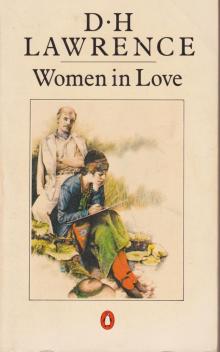 Women in Love
Women in Love The Ladybird
The Ladybird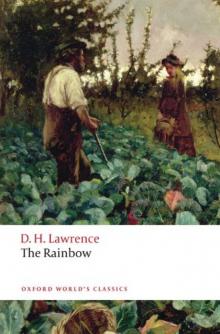 The Rainbow
The Rainbow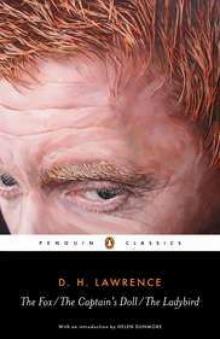 The Captain's Dol
The Captain's Dol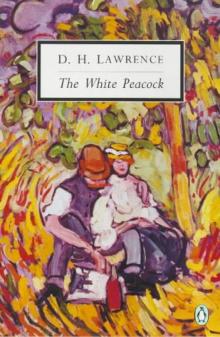 The White Peacock
The White Peacock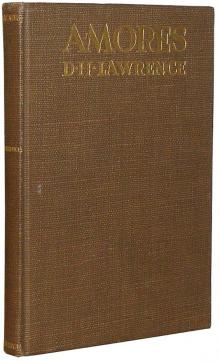 Amores
Amores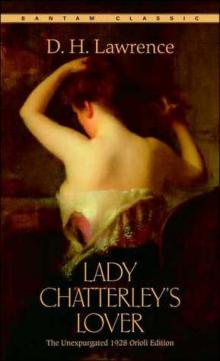 Lady Chatterley's Lover
Lady Chatterley's Lover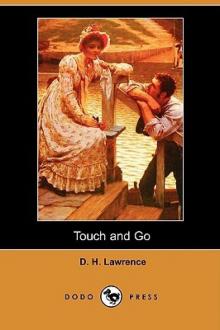 Touch and Go
Touch and Go The Wintry Peacock
The Wintry Peacock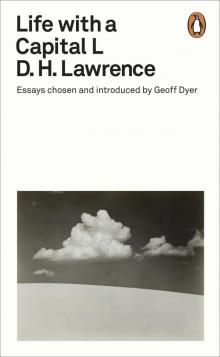 Life with a Capital L
Life with a Capital L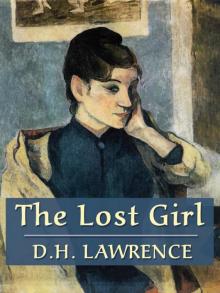 The Lost Girl
The Lost Girl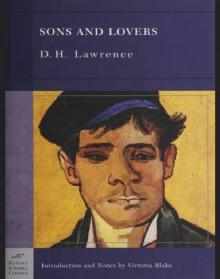 Sons and Lovers
Sons and Lovers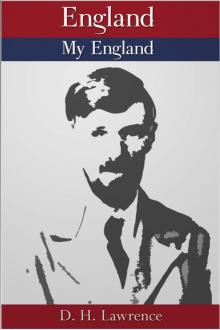 England, My England
England, My England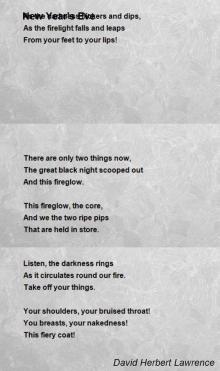 New Poems
New Poems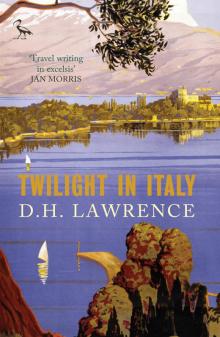 Twilight in Italy
Twilight in Italy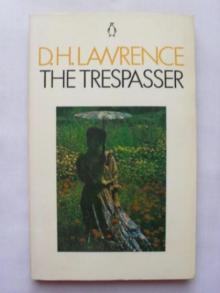 The Trespasser
The Trespasser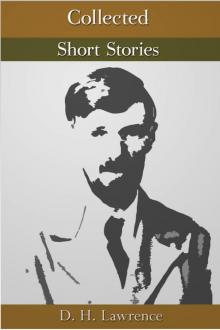 The Collected Short Stories
The Collected Short Stories The First Lady Chatterley's Lover
The First Lady Chatterley's Lover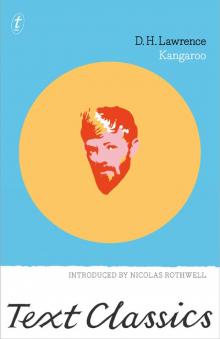 Kangaroo
Kangaroo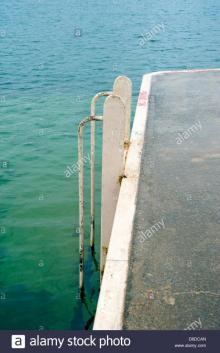 Bay
Bay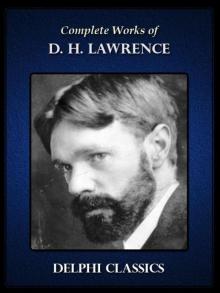 Complete Works of D.H. Lawrence
Complete Works of D.H. Lawrence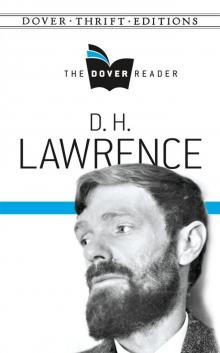 D H Lawrence- The Dover Reader
D H Lawrence- The Dover Reader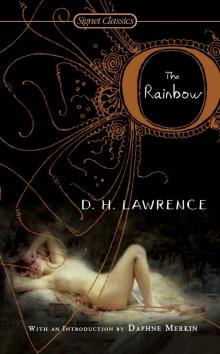 The Rainbow (100th Anniversary ed.)
The Rainbow (100th Anniversary ed.)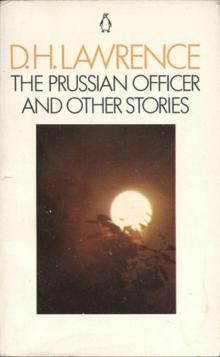 The Prussian Officer
The Prussian Officer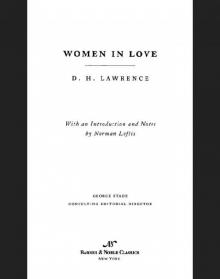 Women in Love (Barnes & Noble Classics Series)
Women in Love (Barnes & Noble Classics Series)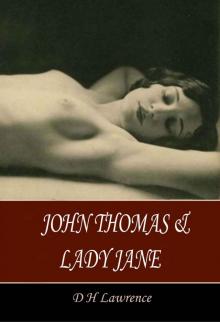 John Thomas and Lady Jane
John Thomas and Lady Jane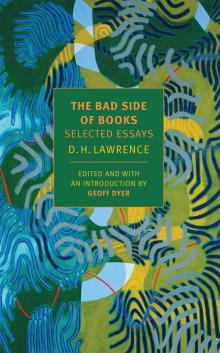 The Bad Side of Books
The Bad Side of Books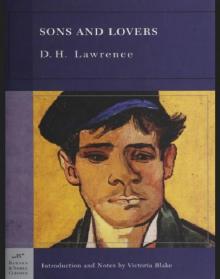 Sons and Lovers (Barnes & Noble Classics Series)
Sons and Lovers (Barnes & Noble Classics Series)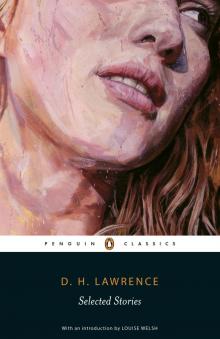 Selected Stories
Selected Stories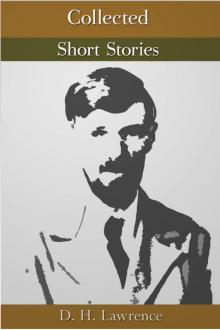 Collected Short Stories
Collected Short Stories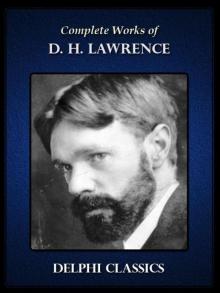 Complete Works of D.H. Lawrence (Illustrated)
Complete Works of D.H. Lawrence (Illustrated)